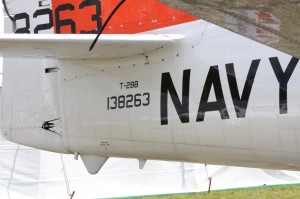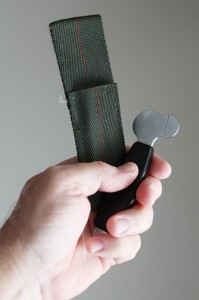The latest mystical memento she brought from some box in the garage was my dzus key. I explain to her it was the way by which one could tell real airplane pilots from ordinary pilots.
I hold the dzus key and tell her how we used them. I give details about the T-28B Trojan I first flew in the Navy. The Trojan had multiple panels secured with dzus screws. We, who flew the Trojan, were issued dzus keys to help access the contents of these panels during our preflight inspections. “The T-34 Mentor pilots did not have dzus keys and we ’28 pilots did.”
“Can I throw it away?”
“No! This is very special,” I explain. “We have to find a good place for this.” Not the answer she was looking for, and I notice her eyes trying to roll back into her head as she leaves the office. She really wants to get rid of a lot of stuff.
But not my dzus key!
Holding the dzus key brings my mind back to the days at Whiting Field near Milton, Florida. There was nothing better than being a brand new ensign learning how to fly the Navy way in a huge T-28B Trojan.
What a magnificent airplane!
The airplane grossed out at about 8250 pounds with two crewmen and a full bag of gas–178 gallons. A Wright Cyclone engine, Model R1820-86, producing 1425 horsepower for takeoff or at military power gave her the power to do almost anything in the sky. What a kick in the pants! The amazing thing about the engine is that it could blow through the entire fuel capacity in about one hour.
At altitude, fuel flow could be brought down to a manageable 40 gallons per hour giving the crew somewhat decent range, cruise speed, and endurance numbers, if you wanted to fly cross-country.
The Trojan did well in cross-country flying, but her forte was in maneuvering flight. For as large a plane as she was, she was nimble. The aeronautical engineers designed the flight controls very well; they were perfectly balanced and relatively light throughout their range of motion as well as the aircraft’s speed envelope. One thing I really enjoyed doing with the airplane was spins.
You would do your clearing turns, bring the nose up, and throttle back. Then, right at the stall break, feed in a bootful of rudder. The next thing you knew you would be over on your back with the nose falling through toward the ground. A moment later, she would stabilize in the upright position with the canopy bow just about at the horizon. When it came time to recover, full opposite rudder and forward stick would stop the rotation and break the stall and get you flying again in about half of a heart beat.
No, I could never throw away my dzus key. It is my talisman to the T-28B and the days I flew real airplanes.
-30-
© 2010 J. Clark



Thanks for sharing Joe. Always great to hear more stories from a professional. I love it when your students visit the tower and ask me, ‘Did Mr. Clark tell you about…….?’ Awesome!!! Take care and God bless you and your lovely Ardis.
Hi, Larry, thank you for reading. Hope it wasn’t too boring… Say hi to B for us!
Not bad Joe…..but lets see/hear some stories about the A-7 Corsair II
They’re coming, Mike. Thanks for checking it out.